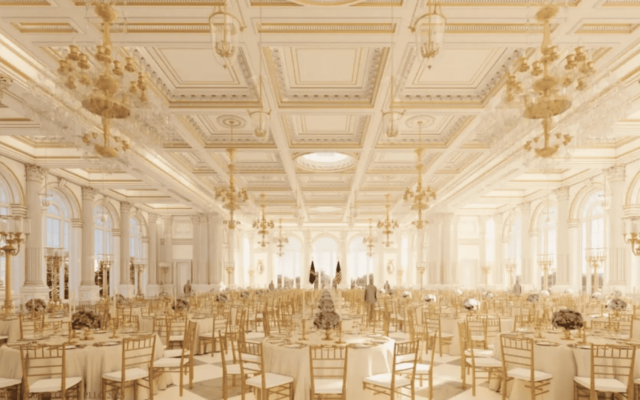Claims circulating online suggest taxpayers are paying for President Donald Trump’s planned 90,000-square-foot White House ballroom. But public statements and federal reporting indicate the large-scale project is being financed by private donors and possibly the president himself, not by federal funds.
The White House has repeatedly said the expansion, now estimated to cost up to $300 million, will be paid for through gifts from companies and individuals supporting the construction. Trump has also said he will personally contribute, although the administration has not disclosed how much he intends to provide.
A list released by the White House shows 37 corporations and wealthy individuals participating in the fundraising effort, including major technology companies, defense contractors and financial executives. How much each donor is contributing has not been publicly detailed.

Fortune also did an in-depth description of each corporation that is contributing to the ballroom. Read here.
In July, when the project was announced, Trump said the ballroom would not cost the American public. “I’m paying for it. The country is not,” he told reporters at the time, later describing the project as “zero cost to the American taxpayer.”
Despite these statements, the project’s changing estimated price has contributed to confusion. The cost was first described as $200 million before increasing to $250 million and then $300 million as demolition began on the East Wing this month.

While taxpayer dollars are not designated for construction, ethics experts say transparency questions remain. Some donors have business interests that require federal approvals, which has led to concerns about optics and accountability surrounding White House fundraising events connected to the project. Critics note that without knowing donor amounts, it is difficult to assess whether any contributors could gain future influence.
Supporters of the ballroom emphasize that private funding avoids public spending while updating a historic space used for official functions. The White House has said the venue will help host large state dinners and diplomatic events that currently exceed existing capacity.
No government agency has announced plans to use congressional appropriations for the ballroom, and none of the reporting reviews shows public funds being directed toward construction.
As work continues on the East Wing, the financing structure and rumors surrounding it highlight how major federal building changes can spark public scrutiny even when taxpayer dollars are not involved.
References
Alan Jaffe. “Trump’s White House Ballroom Sparks Questions About Funding and Ethics.” FactCheck.org
Rebecca Schneid and Connor Greene. “Who Is Paying for Trump’s $250 Million Ballroom — and What They Might Get in Return.” TIME
Laura Doan and Julia Ingram. “What Donors to Trump’s White House Ballroom Stand to Gain From the Federal Government.” CBS News



